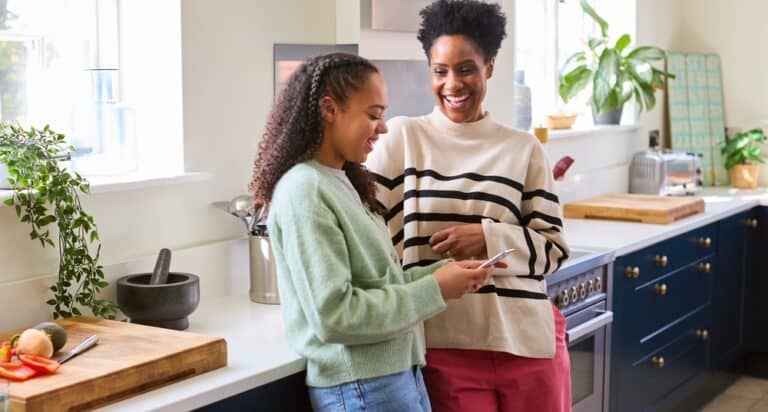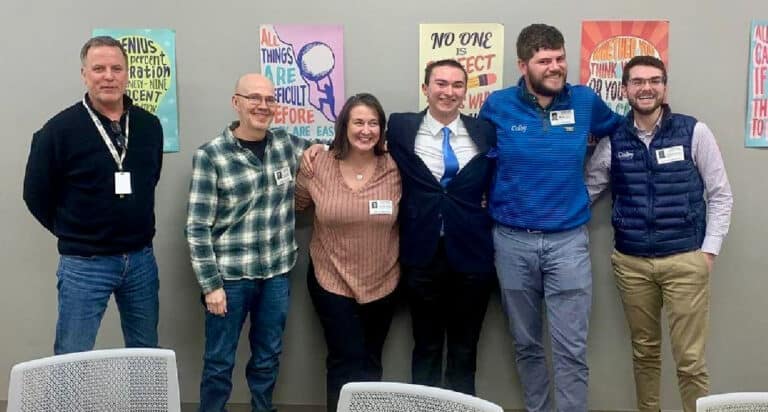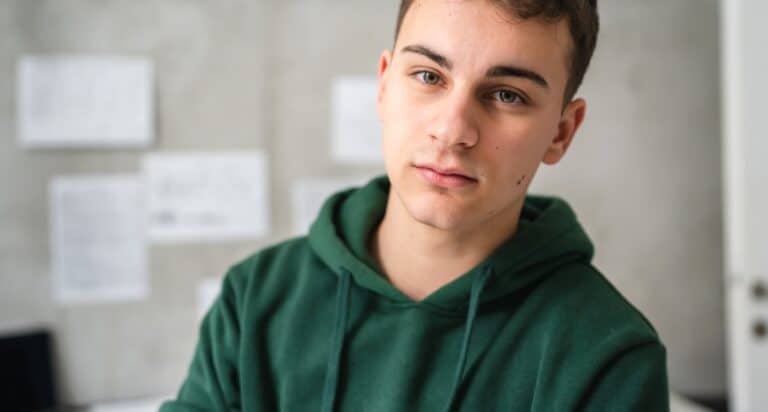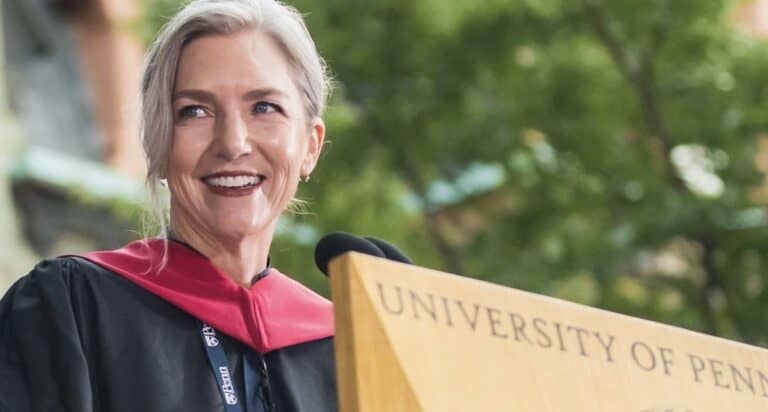The summer going into my senior year of high school, I decided to apply to colleges. And by “I decided,” I mean I waited until the last minute and quickly scrambled together some applications. Whether I was going to college wasn’t even a question for me, but I put my most magnificent procrastination skills to work when it came to applying.
The thought of putting my best face forward for my dream schools and risking getting rejected was, frankly, terrifying. I knew I wanted to go to certain schools because of their beautiful campuses, sports teams, and great reputations, but how did I know whether or not I was the right fit for them?
People tend to use acceptance rates to measure how likely you are to get into a school, but how the hell was I supposed to know if I was a 30% acceptance rate kid, a 15%, or maybe a 60%?

With help from parents, guidance counselors, and friends, I picked out six schools: two reaches, two targets, and two safeties. Using online graphs of grades and SAT scores of accepted students, I tried to imagine where I would fit in and how realistic it was to apply to those schools. I created ideas in my head about where I would be going.
College admissions: reach, targets, and safety schools
I imagined I would be the outlying dot on those graphs with an abnormally low GPA for reaching schools, but I still got in. For my targets, I saw myself blending in with the thousands of other kids whose academic statistics matched mine. As for my two safety schools, I pictured myself being the dot at the top of those graphs, a kid whose statistics were well above the average of the school’s admitted applicants. I thought it would be embarrassing to be one of those dots because it represented falling just short of another school’s graph.
The first school I heard back from was the University of Massachusetts Amherst, one of my two safety schools and, honestly, the safer of the two. I had visited UMass several times because my brother, Sam, played football there, where he would be attending graduate school. Every time I visited, I focused primarily on spending time with Sam, and I never considered whether I would like to go there.
I applied because it seemed like a nice campus; my brother liked it there, and that’s about it. I knew almost nothing about the school, so it was an afterthought on my college application list.
They offered me a generous scholarship, which I didn’t give a second thought. I sent a text to my parents, and they sent back heart-eye emojis, and I thought that would be the end. I expected to receive many more happy letters from colleges containing generous scholarships.
That first scholarship and acceptance letter gave me the impression that choosing colleges was like shopping at the Gap. Sure, there’s a hefty sticker price, but everything is ALWAYS on sale. I’ll be the first to tell you choosing a college is nothing like picking out chambray shirts at the Gap; a deal is hard to come by.
Of the five remaining schools, I got accepted to 2 and rejected from 3. None offered me any financial aid. One of the colleges was Syracuse University, my dream school at the time. The school was also roughly $70,000 a year. Suddenly, I heard everyone talking about the weight of those elusive “student loans” that felt natural. My parents sat me down and told me that I could go to any of the colleges that have accepted me, and they would support my decision; however, choosing Syracuse would mean taking on tens of thousands of dollars in student loans every year.
The thought of being $10,000 in debt overwhelmed me. I backpacked through Europe with my brother the summer I applied to schools. I’d saved every penny for a year and a half to go on that trip, costing around $4,000. I thought about all the hours I’d spent working at coffee shops and bussing tables to earn that money.
At this point, I had to consider the three schools I’d been accepted. Syracuse, Skidmore, and UMass. I liked Skidmore, but a small school didn’t feel right anymore. So there was Syracuse, the beautiful campus, town, sports teams, and an equally impressive mountain of student loans.
Why I decided to go to UMass, my safety school
And then there was UMass.
I never even officially toured UMass. I knew very little about the school. I knew the football team was a contender for the worst Division 1 football team and had a reputation for being a party school known as “Zoomass.”
However, I had been watching my older brother experience UMass firsthand. He made amazing friends; he loved his classes and professors and was planning to attend graduate school there, something I don’t think even Sam would have predicted his Freshman year. My view of colleges was clouded by a fog of acceptance rates and rankings, but it was clear to me through Sam’s experience that UMass was a great school.
Reluctantly, I decided to attend UMass. It seemed like the more practical option. Now that I’m looking back on my Freshman year, I realize what a blessing it was that I decided to go to UMass Amherst. This past year, I’ve made terrific friends, rediscovered my love for the outdoors in the mountainous Pioneer Valley where UMass lies, and recognized my passion for journalism through the school newspaper. I’ve been challenged in my classes like never before and have an active social life.
This isn’t an advertisement for UMass Amherst. I love that I can bike for 5 minutes to pet some cows or in the opposite direction to go downtown for coffee, but I know that’s not for everyone. I want to convey that I’ve attended my safety school for the past year and had the time of my life. I never pictured myself going here. I used to think it was depressing to hear that people were attending their safety schools, but now I see things differently.
In the college process, we build up preconceived ideas about colleges that are mostly false. Just because a school has a high acceptance rate doesn’t mean you won’t be academically challenged there. Just because a school doesn’t have much Greek life doesn’t mean you won’t be hungover at your 10 AM class. At the end of the day, college is college, no matter where you go. I stressed out so much over acceptance letters and SAT scores, but looking back; it wasn’t worth the energy.
I don’t mean to say that price should steer you away from college. Education is one of the most worthwhile things to invest in. However, the drastically different prices of the two schools made me consider what I was paying for. Is one medium-sized state school worth $20,000 more than another? In some cases, probably yes, but in my case, no.
When I talk to friends who went off to school, whether an Ivy or a nearby community college, they all say the same thing: they’re making lots of friends, taking classes they love, and can’t wait to return to school. Happiness in college has nothing to do with your school’s ranking and everything to do with what you make of the experience.
I remember talking to my friends early in college, saying, “worst-case scenario, I would go to UMass, my safety school.” It seems crazy I once thought of my school in this way. In just a year, my adjective of choice to describe UMass has transformed from a “worst-case scenario” into a “dream school.”
You Might Also Enjoy Reading:
Dear Friends and Family, Please Keep Your Snarky Opinions About My Teen’s College Choice to Yourself
Why a College Decision Has to Be Your Teen’s Choice, Not Yours









